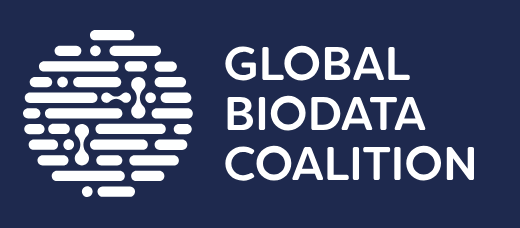The name of this superfamily has been modified since the most recent official CATH+ release (v4_3_0). At the point of the last release, this superfamily was named:
"Rhodopsin 7-helix transmembrane proteins
".
FunFam 306: Adrenocorticotropic hormone receptor
Please note: GO annotations are assigned to the full protein sequence rather than individual protein domains. Since a given protein can contain multiple domains, it is possible that some of the annotations below come from additional domains that occur in the same protein, but have been classified elsewhere in CATH.
There are 3 GO terms relating to "molecular function"
The search results have been sorted with the annotations that are found most frequently at the top of the
list. The results can be filtered by typing text into the search box at the top of the table.
| GO Term | Annotations | Evidence |
|---|---|---|
|
Melanocortin receptor activity GO:0004977
Combining with melanocortin to initiate a change in cell activity.
|
2 | Q01718 (/TAS) Q01718 (/TAS) |
|
Corticotropin receptor activity GO:0004978
Combining with corticotropin to initiate a change in cell activity.
|
2 | Q01718 (/TAS) Q01718 (/TAS) |
|
Protein binding GO:0005515
Interacting selectively and non-covalently with any protein or protein complex (a complex of two or more proteins that may include other nonprotein molecules).
|
2 | Q01718 (/IPI) Q01718 (/IPI) |
There are 5 GO terms relating to "biological process"
The search results have been sorted with the annotations that are found most frequently at the top of the
list. The results can be filtered by typing text into the search box at the top of the table.
| GO Term | Annotations | Evidence |
|---|---|---|
|
G protein-coupled receptor signaling pathway GO:0007186
A series of molecular signals that proceeds with an activated receptor promoting the exchange of GDP for GTP on the alpha-subunit of an associated heterotrimeric G-protein complex. The GTP-bound activated alpha-G-protein then dissociates from the beta- and gamma-subunits to further transmit the signal within the cell. The pathway begins with receptor-ligand interaction, or for basal GPCR signaling the pathway begins with the receptor activating its G protein in the absence of an agonist, and ends with regulation of a downstream cellular process, e.g. transcription. The pathway can start from the plasma membrane, Golgi or nuclear membrane (PMID:24568158 and PMID:16902576).
|
2 | Q01718 (/TAS) Q01718 (/TAS) |
|
G protein-coupled receptor signaling pathway, coupled to cyclic nucleotide second messenger GO:0007187
The series of molecular signals generated as a consequence of a G protein-coupled receptor binding to its physiological ligand, where the pathway proceeds with activation or inhibition of a nucleotide cyclase activity and a subsequent change in the concentration of a cyclic nucleotide.
|
2 | Q01718 (/TAS) Q01718 (/TAS) |
|
Adenylate cyclase-activating G protein-coupled receptor signaling pathway GO:0007189
The series of molecular signals generated as a consequence of a G protein-coupled receptor binding to its physiological ligand, where the pathway proceeds through activation of adenylyl cyclase activity and a subsequent increase in the concentration of cyclic AMP (cAMP).
|
2 | Q01718 (/IDA) Q01718 (/IDA) |
|
Adenylate cyclase-activating G protein-coupled receptor signaling pathway GO:0007189
The series of molecular signals generated as a consequence of a G protein-coupled receptor binding to its physiological ligand, where the pathway proceeds through activation of adenylyl cyclase activity and a subsequent increase in the concentration of cyclic AMP (cAMP).
|
2 | Q64326 (/ISO) Q64326 (/ISO) |
|
Placenta development GO:0001890
The process whose specific outcome is the progression of the placenta over time, from its formation to the mature structure. The placenta is an organ of metabolic interchange between fetus and mother, partly of embryonic origin and partly of maternal origin.
|
1 | G3V848 (/IEP) |
There are 6 GO terms relating to "cellular component"
The search results have been sorted with the annotations that are found most frequently at the top of the
list. The results can be filtered by typing text into the search box at the top of the table.
| GO Term | Annotations | Evidence |
|---|---|---|
|
Cytoplasm GO:0005737
All of the contents of a cell excluding the plasma membrane and nucleus, but including other subcellular structures.
|
2 | Q64326 (/ISO) Q64326 (/ISO) |
|
Plasma membrane GO:0005886
The membrane surrounding a cell that separates the cell from its external environment. It consists of a phospholipid bilayer and associated proteins.
|
2 | Q64326 (/ISO) Q64326 (/ISO) |
|
Plasma membrane GO:0005886
The membrane surrounding a cell that separates the cell from its external environment. It consists of a phospholipid bilayer and associated proteins.
|
2 | Q01718 (/TAS) Q01718 (/TAS) |
|
Integral component of plasma membrane GO:0005887
The component of the plasma membrane consisting of the gene products and protein complexes having at least some part of their peptide sequence embedded in the hydrophobic region of the membrane.
|
2 | Q01718 (/TAS) Q01718 (/TAS) |
|
Cytoplasm GO:0005737
All of the contents of a cell excluding the plasma membrane and nucleus, but including other subcellular structures.
|
1 | G3V848 (/IDA) |
|
Plasma membrane GO:0005886
The membrane surrounding a cell that separates the cell from its external environment. It consists of a phospholipid bilayer and associated proteins.
|
1 | G3V848 (/IDA) |
